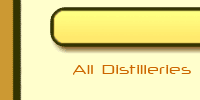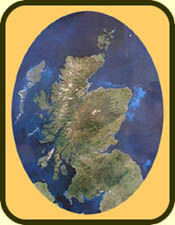Teaninich distillery
Teaninich Scotch Whisky
Teaninich (Pronounced: TEE-ah-nen-ik)
Highlands (North)
57°41'22.70"N, 4°15'52.91"W
Dalmore, Glenmorangie, Balblair
1817
Active
Dairywell Spring
3 Wash still, 3 Spirit still
4,000,000 litres of pure alcohol per year
Diageo > UDV (since 1933)
Alness, Ross-shire, IV17 0XB, Scotland, UK
+441349 885001
No
No
No - except Flora & Fauna and UD Rare Malts
Below, on WhiskyFun and on the Malt Maniacs Monitor
Name:
Region:
GPS location:
Neighbours:
Founded:
Status:
Water source:
Equipment:
Production capacity:
Ownership:
Address:
Telephone number:
Visitor centre:
Website:
Official bottlings:
Scores & tasting notes:
Teaninich whisky

2000 - Teaninich is the first malt whisky distillery in Scotland to install a mash filter press instead of a mash tun.
2009 - Diageo releases a
Teaninich 1996 vintage official release in the 'Manager's Choice' series.
2013
- In April 2013 Diageo announced that the Teaninich distillery will receive a £12m upgrade. However, this investment is dwarfed by the construction of a new 'super distillery'
(investment £50 million) right next to Teaninich. This investment is also larger than the £40 million it cost to build Roseisle a few years earlier. The distillery will have 16 pot stills and employ 20 people. (Other sites that were considered by Diageo were Glendullan and Inchgower.)

Teaninich was founded in 1817 by captain Hugh Munro, the owner of the
Teaninich Estate. In 1830 he sold the estate to his younger brother John,
a Lieutenant-General who was famous as a
benefactor of the local poor.
When John had to leave for India to help defend the British empire from
the indians in 1850 he leased the distillery to Robert Pattison from Leith.
In 1869 the lease on Teaninich
distillery was passed on to John McGilchrist
Ross who would found his own distillery at Glenskiach many years later.
The Teaninich distillery
is located a little north of Inverness, not far from
the Dalmore distillery. As a single malt whisky it's quite obscure because
Diageo has always used most of the output as a 'filler' for their blends.
Consequentially, bottlings of Teaninich as a single malt are quite rare.


In 1895 John McGilchrist Ross (a brother of Balblair's James Ross) relinquished the distillery tenancy. Control of the distillery is taken over by a partnership of spirit merchant John Munro and whisky broker Robert Innes Cameron who also acquire all capital and assets in 1898. In 1904 Robert Innes Cameron (who also owned parts of Benrinnes, Linkwood and Tamdhu) became the sole proprietor of Teaninich. He remained a major influence in the distillery's history until he passed away in 1932.

After the death of Robert Innes Cameron, the Teaninich distillery was sold on
to Distillers Company Limited
(DCL) in 1933. This marked the start of a fairly
uneventful period of a few decades in Teaninich's history - except for a period
between 1939 and 1946 during which the distillery was closed due to barley
shortages. Little changed at the little old distillery complex until 1970, when
DCL built a massive, modern factory with six brand new stills next to the old
traditional buildings. For a few years both the four old stills (who were referred
to as 'the B side') and six new stills (the A side) were both operational - which
illustrates that the malt whisky that was produced here was fairly generic...
After all, the fact that two completely different installations that happen to occupy the same
estate are able to produce the 'same' malt whisky illustrates that the charming stories about
the
craftsmanship of distillers have to be taken with a grain of salt. Copywriters love to swoon
over distillers that are said to take great care to reproduce the same dents and imperfections
of the old pot stills when they have to be replaced. The history of some distilleries proves that
these are often old wives tales - if it suits the distillers they will happily construct a brand new
factory where a completely different whisky is produced under the same 'brand name'.

In 1973 the milling, mashing and fermentation installations of the old part of the distillery are rebuilt
and in 1975 a dark grains plant was constructed for the production of cattle feed out of
the waste of
the distillation process. After a large crisis
hit the whisky world in the early 1980's, the four stills of
'the B side' (the old distillery) were closed in 1984. The six stills of the A side (i. e. the new distillery)
followed one year later in 1985. Both parts of Teaninich remained mothballed between 1985 and
1991, when the A side was re-opened by UDV (the successors of DCL).
While the new part of the distillery was revived in 1991, the so-called B side remained mothballed.
Finally, in 1999, the owners decided to decommission the old section of the distillery. That
means
that the overall production capacity of Teaninich (which was expanded from two to four stills in
1962 and from four to a grand total of ten in the 1970's) decreased to six stills again later on.
The last technical change I know of was the installation of a mash filter press
in 2000. This device
is regularly used in breweries, but Teaninich was the first whisky distillery in Scotland to install
such a contraption. In the filter press the mash is squeezed between 24 cloth plates, the wort is
collected and the draff is removed. After repeating this process three times, the wash back is full.
Despite several advantages (faster turnover times, fewer moving parts and less wear and tear),
Teaninich is still the only distillery in Scotland to use a filter press instead of a mash tun.

1) In 1887 Alfred Barnard (author of "The Whisky Distilleries of the United Kingdom") described Teaninich as the only
distillery north of Inverness that was lit by electricity. He was also impressed with Teaninich's use of telephones;
"It possesses telephonic communication with the proprietor's residence and the quarters of the excise officer."
2) Robert Innes Cameron (who became proprietor in 1904) later became chairman of the Malt Distillers Association.
3) In 1962 Teaninich's stillhouse was refitted. The steam engine and the pair of water wheels were replaced by electricity while an internal steam heating system was replaced by coal fired furnaces.
4) Teaninich sources its malted barley from the nearby Glen Ord maltings.
5) Teaninich is a key component of the Johnnie Walker blends.
6) Teaninich has eight washbacks (made out of larch) with a total capacity of 60,000 litres.
7) Only Distillers Yeast is used at Teaninich.
8) The wash still charge is 17,500 litres and these stills are heated by steam pans.
The spirit still charge is 15,600 litres and these stills are heated by steam coils.
9) In 1899 John Munro and Robert Innes Cameron spent almost £10,000 on extending and refitting Teaninich.
This is a considerable sum to pay for a reconstruction, considering that a new distillery could be built for the same amount in those days.
10) Teaninich was never marketed as a single malt, but in 1992 a Flora and Fauna bottling was released and a few years later three UD Rare Malts bottlings followed. Independent bottlings of Teaninich are rare.
Teaninich 12yo (40%, Lombard, Bottled +/- 2007)
Nose: It's in the farmy end of the spectrum. Vegetal smells. Fairly restrained, sweetening out.
Taste: Sweet, smoky and sticky. Pinch of peat? Dry tannins in the fairly rough finish. Perfumy?
Score: 76 points - Resembles #149 in mouth feel. Needs time.
Teaninich 21yo 1983/2004 (50.8%, Cadenhead, 96 Bottles)
Nose: Powerful - grassy with subtle organics. Hint of peat? Slowly more fruity notes emerge.
Much more expressive than the 10yo F&F. More fruit, organics and oriental spices over time.
Taste: Much lighter and fruitier than the nose suggests, drying out towards the finish. Solid.
After the first few investigatory sips this quickly grew on me - just like the nose grew on me.
Score: 85 points - another malt that needs quite some time to reach its full potential.
Teaninich 1983/2003 (46%, Connoisseurs Choice)
Nose: Starts off with sherry and organics. Balsamico salad dressing. A deep sweetness with some faint smoke.
Smoked sausage and shoe polish. A very impressive nose that's worthy of a score well into the 80's.
Taste: Unfortunately, the palate didn't match the nose. No sweetness whatsoever. A hint of peat?
Old dried chives. Dry and bitter, pulling the score down to 77 points.
Score: 77 points - quite a disappointment after the impressive nose.
Teaninich 19yo 1983/2002 (58.7%, Cadenhead's Authentic Collection, bourbon hogshead, 174 bottles)
Nose: Nice but a little bit 'dirty'. Malty with some nuts and toffee. Chalk. Some organics after a while.
Taste: Hot. Very, very hot. Too hot too really pick up anything beyond the solid sweetness. Feels great.
Score: 83 points - not too complex but a great powerhouse malt. It took a while to grow on me, though.
The nose seemed a tad grainier during a second try. Still dirty. All in all, I'm happy with my 83 points.
Teaninich 1982/1998 (40%, Connoisseurs Choice)
Nose: Restrained. Some sherry sweetness. Sawdust. Pine. Menthol.
Taste: Sweetish. Not unlike rum. Seems stronger than the actual 40%.
Very subtle elements as well. Pine? Grainy notes. Medium dry finish.
Score: 70 points - this Teaninich is simply disappointing at sixteen years old. Clearly a blenders malt.
Teaninich 10yo (43%, Flora & Fauna, Bottled +/- 1997)
Nose: Hmmm. Rather weak start. Malty. A tad towards the oily side. Some pine?
I could use the terms creamy and grassy, but it's all very subtle. Some organics.
Maybe it's 'tired'? Victor told me that he opened this bottle over two years ago.
Taste: Sweetish and a little grainy. Grittier in the centre. Short, dry finish.
Score: 74 points - this one might have suffered from oxidation, so I'll be mild.
Teaninich 14yo 1983/1997 (58.3%, Clan des Grands Malts)
Nose: Light and grainy at first, mellowing out. Subtle organics. Grows much more complex with water.
Taste: Bold and sweet with a burn in the back of the throat. Loss of body and more bitterness with water.
Score: 84 points - rating this was a bit of a conundrum; water improves the nose but destroys the palate.
Teaninich 20yo (56.9%, James McArthur, Pot Still Label) - this bottling was bottled around 1997.
Nose: Extremely sharp. Ammonia. Not enjoyable. A 'male' Helen Arthur bottling. Oxidised perhaps?
Palate: harsh and gritty. Major disappointment. Sharp and unpleasant. Coffee syrup.
Score: 64 points
- This Teaninich ended the session for me - it killed my nose completely.
And there's more to tell about Teaninich...
These were not all (official & independent) bottlings of Teaninich Scotch whisky I've tried over the years.
Besides, these tasting notes only reflect my own, personal opinion; your tastes might be different from mine.
Fortunately, you can find the scores and tasting notes from up to two dozen other whisky lovers in the 'Malt Maniacs
Monitor' - an independent whisky database with details on more than 15,000 different whiskies from Scotland and the rest of the world. Visit the Teaninich page on the MMMonitor and select 'scorecard view' if you want to know how
other whisky lovers felt about the dozens of Teaninich expressions that were released in recent years. However, if you'd like to learn more about whisky in general (and single malt Scotch whisky
in particular), you might want to check out the Beginner's Guide to Scotch whisky (10 chapters filled with everything you need to fully enjoy and
appreciate a glass of single malt whisky) or the mAlmanac (sort of a rudimentary whisky shopping guide.)



|
|
|
|
|
DD Overview |
|
|
|






